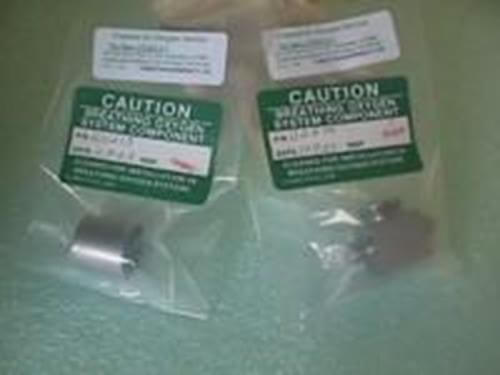The Dangers Of Improper Oxygen Cleaning & Maintenance
Why Is Oxygen Cleaning Necessary?
Oxygen is not a flammable gas in and of itself, but it does act as an accelerant which can cause a tiny spark to become a raging inferno. The three materials needed to start a fire are oxygen, heat, and fuel. A spark, even a small spark, can provide enough heat to set a small contaminant (fuel) aflame, and the high purity oxygen atmosphere accelerates the growth of the flame.
Though this fire will (normally) be short lived, it can set off a chain reaction, igniting other small contaminates and making the fire larger.
Remember that the fire will follow the flow of oxygen as well, a flow that ends tragically in the face and/or lungs of a person receiving the oxygen. Tiny particles, such as those listed below, are a catastrophe just waiting to happen:
- Dirt & Dust
- Hair & Dried Skin
- Paper
- Cloth Fibers
- Chemicals
- Rust
Keeping oxygen equipment cleaned and maintained can reduce the risk of fire, injury, and death by a huge margin.
Apart from fire danger, there is also the danger of injury and ailment from a poor quality of oxygen. Foreign objects and materials aspirated through poorly maintained and cleaned oxygen equipment can irritate the throat, lungs, and nasal passages and possibly cause injury to an already compromised physical system.
What Parts Should Be Regularly Cleaned?
In short, all parts of an oxygen delivery system should be routinely cleaned and maintained to prevent the risk of fire and other health hazards. The parts include:
- Pipes, Tubes, & Hoses
- Valves & Fittings
- Heater Coils
- Tanks, Vessels, & Housings
- Gages & Assemblies
How often an oxygen system should be routinely cleaned depends on how often it is used and manufacturers specifications. Check your paperwork carefully and always perform cleaning if the system has been idle for more than 24 hours. Dust and other contaminates can settle quickly when an oxygen system is not in use.
How Clean Is Clean To Reduce Risks?
Again, the overall cleaning and maintenance requirements will vary by manufacturer, and it is always best to follow the manufacturer’s guidelines. However, these guidelines will likely include a timeline for which the system will need to be cleaned and serviced in great detail by a professional service to remove microscopic buildup and contaminates.
Central Electropolishing Co., Inc. has maintained a reputation of excellence in the oxygen cleaning industry, using state-of-the-art techniques and equipment to ensure the highest levels of safety and oxygen quality.
Contact Central Electropolishing Co. today, and don’t become the next tragic statistic.


Leave a Comment